In the seafloor map below the arrows show the motion of the ocean plates 228740-In the seafloor map below the arrows show the motion of the ocean plates
Seafloor 3) Sediments were deposited after widespread volcanic eruptions 4) Sediments were deposited between two diverging oceanic plates 4 The diagram below represents a section of the Earth's bedrock The arrows show the direction of forces that are gradually compressing this section Which diagram represents the most probable result of these• Note relative motion between two displaced features is in opposite direction to that which would have produced such an offset in the absence of seafloor spreading • Compare direction of red arrows on left panel to yellow arrows on right panel (San Andreas Fault)(1) the direction of flow of warm ocean currents (2) the mineral composition of samples of mafic mantle rock (3) comparison of the rates of sediment deposition (4) the locations of shallowfocus and deepfocus
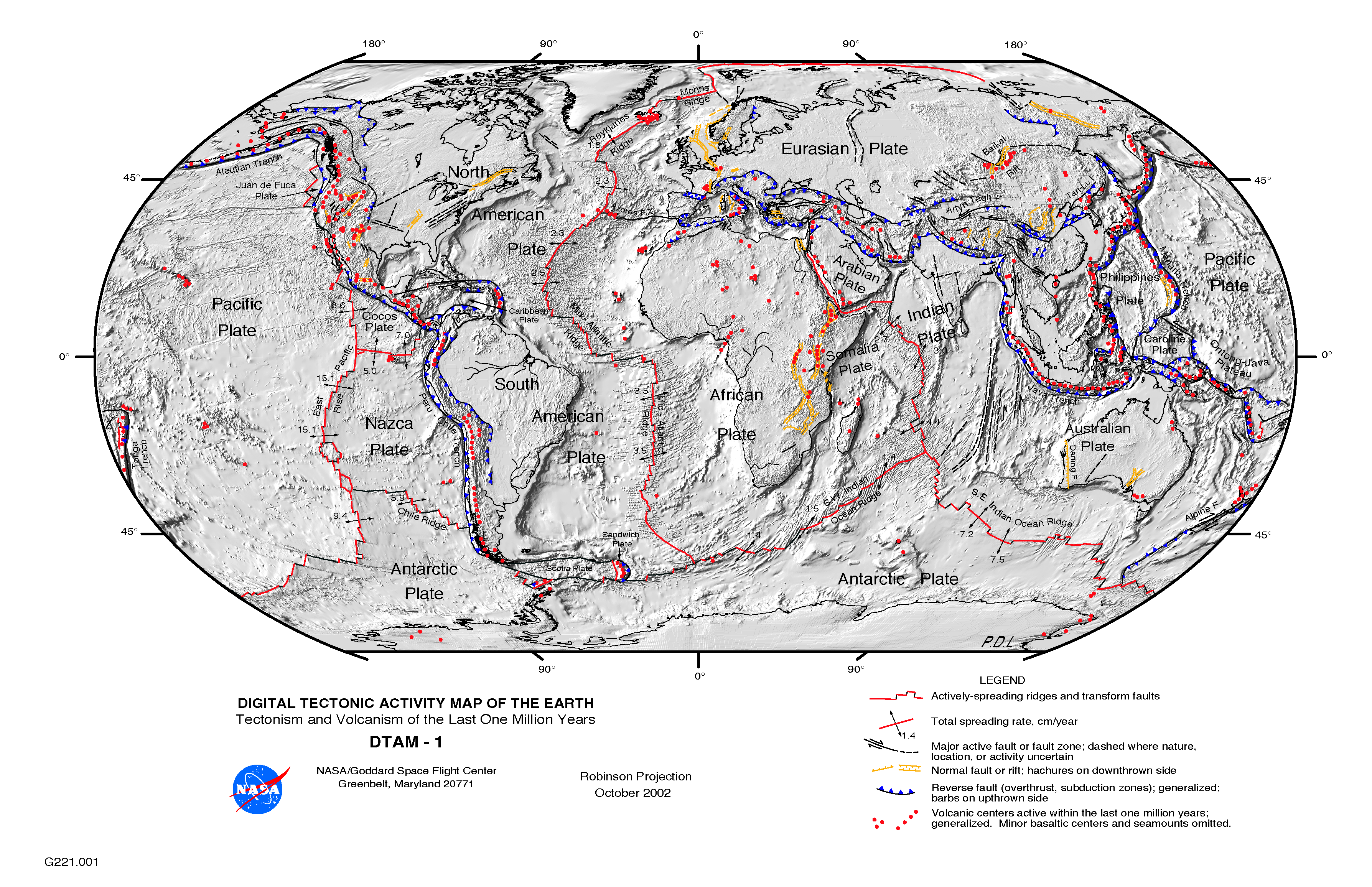
4 4 Plates Plate Motions And Plate Boundary Processes Physical Geology First University Of Saskatchewan Edition
In the seafloor map below the arrows show the motion of the ocean plates
In the seafloor map below the arrows show the motion of the ocean plates-4 Halfnhalf Clue 43 Which observation provides the best evidence of the pattern of crustal movement at the PeruChile Trench?Seafloor spreading, theory that oceanic crust forms along submarine mountain zones, known collectively as the midocean ridge system, and spreads out laterally away from them This idea played a pivotal role in the development of the theory of plate tectonics, which revolutionized geologic thought during the last quarter of the th century




Plate Tectonics Definition Theory Facts Evidence Britannica
Jan 11, 15 · Midocean Ridges Plates move apart at midocean ridges Lava rises upward, erupts, and cools Later, more lava erupts and pushes the original seafloor outward This is seafloor spreading Seafloor spreading forms new oceanic crust The rising magma causes earthquakes Most midocean ridges are located deep below the seaJul 30, · But because ships move slowly, it would take one ship 0 years to completely map the seafloor An international effort to map the entire ocean floor104 Plates, Plate Motions, and PlateBoundary Processes Continental drift and seafloor spreading became widely accepted around 1965 as more and more geologists started thinking in these terms By the end of 1967, Earth's surface had been mapped into a series of plates (Figure 1016)
Figure 2 The lithospheric plates and their names The arrows show whether the plates are moving apart, moving together, or sliding past each other Movement of the plates over Earth's surface is termed plate tectonics Plates move at a rate of a few centimeters a year, about the same rate fingernails grow8 The map below shows the northern section of the boundary between the Arabian Plate and the African Plate Arrows show the relative direction of plate motion Which type of plate boundary is located at the Jordan Fault?Mar 13, · 5 The map below shows the northern section of the boundary between the Arabian Plate and the African Plate Arrows show the relative direction of plate motion Which type of plate boundary is located at the Jordan Fault?
Base your answers to questions 12 and 13 on the map below, which shows Earth's Southern Hemisphere and the inferred tectonic movement of the continent of Australia over geologic time The arrows between the dots show the relative movement of the center of the continent of Australia The parallels of latitude from 0° to 90° south are labeledA Lava erupts from hotspots and spreads over the ocean floor b The seafloor gradually spreads in size as a result of erosion of the continental shelves c Sediments from continents are carried to the ocean in rivers and spread out on the ocean floor d Lava erupts from the midocean ridge and is carried away as the floor of the oceanThe motion of plates at the boundaries is consistent with the styles of faulting that we expect in regions of extension, convergence, and translation and the depths of earthquakes is consistent with the idea of oceanic recycling by subduction and seafloor spreading Earthquake locations for events between 1965 and 1995
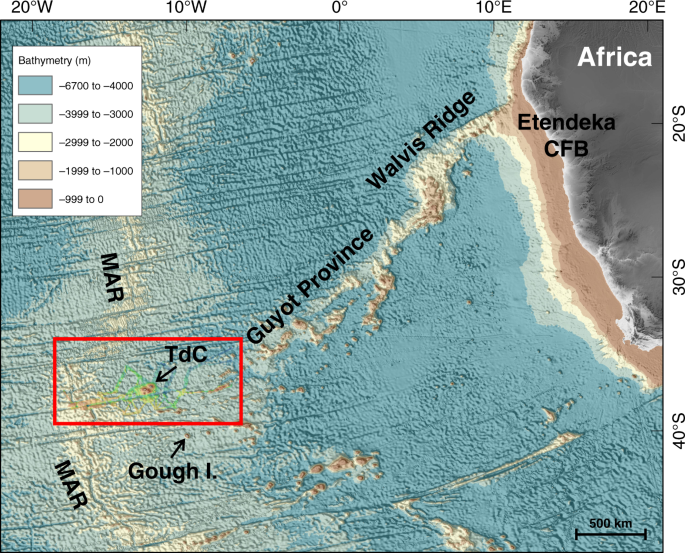



Seafloor Evidence For Pre Shield Volcanism Above The Tristan Da Cunha Mantle Plume Nature Communications



Divergent Boundary Wikipedia
6)Base your answer to the following question on the map below, which is an enlargement of a portion of the Tectonic Plates map from the Earth Science Reference Tables Points A and B are locations on different boundaries of the Arabian Plate The block diagram below represents Earth's surface and interior along the East African RiftJun 08, 15 · Seafloor spreading occurs along midocean ridges—large mountain ranges rising from the ocean floor The MidAtlantic Ridge, for instance, separates the North American plate from the Eurasian plate, and the South American plate from the African plateThe East Pacific Rise is a midocean ridge that runs through the eastern Pacific Ocean and separates the Pacific plate37The map below shows the northern section of the boundary between the Arabian Plate and the African Plate Arrows show the relative direction of plate motion Which type of plate boundary is located at the Jordan Fault?
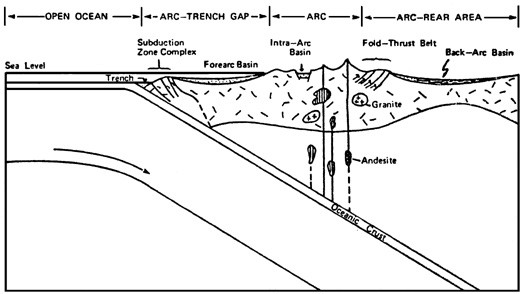



Plate Tectonics And Continental Drift Springerlink




Plate Boundary Segmentation In The Northeastern Caribbean From Geodetic Measurements And Neogene Geological Observations Sciencedirect
Question SEAFLOOR AGES Part 1 Divergent Boundary The Diagram Is Of A Divergent Boundary With Arrows Showing The Direction In Which The Plates Are Moving B с The Scala Ines Are 10 Km Apart 1 What Is The Age Of The Rocks At Location B2 Years Old 1 Million Years Old 2 Million Years Old 4 Million Years Old 2 If Each Plate Is Moving At A Rate Of 10 Lem Per 1While the ocean has an average depth of 23 miles, the shape and depth of the seafloor is complex Some features, like canyons and seamounts, might look familiar, while others, such as hydrothermal vents and methane seeps, are unique to the deep This graphic shows several ocean floor features on a scale from 035,000 feet below sea levelPart III Relative Plate Motion (28 points) Instructions In the map below, you are looking down on three lithospheric plates The darker plates (Plates 1 and 2) are moving in the direction indicated by the white arrows Plate 3 is stationary (not moving) Plates 1 & 2 are denser than Plate 3




Plate Tectonics Definition Theory Facts Evidence Britannica




Plate Tectonics Runs Deeper Than We Thought Ars Technica
The land on the left side of the boundary moves backwards 2 Sketch Draw a bird'seye view of the plate boundary before and after the plate motion Draw anTwo plates are moving apart, creating new seafloor s SCIb Question 7 SURVEY 300 seconds Q The diagram below shows a model of the movement of two tectonic plates When the plates collide, one plate often moves below the other plateSeafloor spreading gradually pushes tectonic plates apart at midocean ridges When this happens, the opposite edge of these plates push against other tectonic plates Subduction occurs when two tectonic plates meet and one moves underneath the other (Fig 723) Oceanic crust is primarily composed of basalt, which makes it slightly denser than
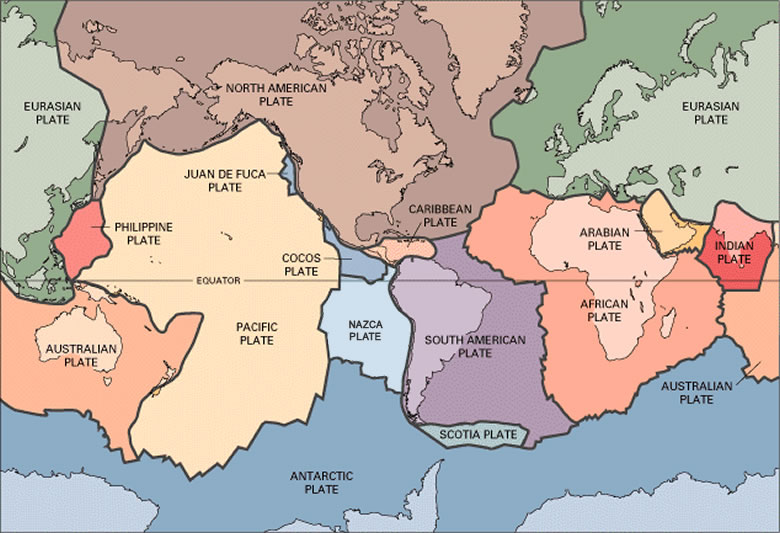



Plate Tectonics Map Plate Boundary Map




4 4 Plates Plate Motions And Plate Boundary Processes Physical Geology First University Of Saskatchewan Edition
East Pacific Rise, linear submarine volcanic chain on the floor of the southeastern Pacific Ocean, roughly paralleling the west coast of South AmericaThe East Pacific Rise forms part of the circumglobal system of active volcanic ridges, all of which define the position of diverging plates where new crust is being createdClick the left arrow four times to see how the plates move How would you describe the motion of plates in a collisional boundary?A)seafloor fossils at location W B)earthquakes and volcanic eruptions near location X C)flooding near location Y




Tectonic Plates And Plate Boundaries Earthquakes At A Plate Boundary Earthquakes Science Topics Learning Home Gns Science
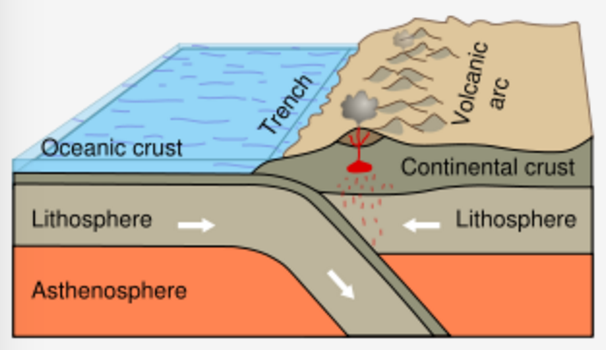



5 7 Theory Of Plate Tectonics Geosciences Libretexts
The continental plates move toward each other, and they collide 2 Sketch Draw a side view of the plate boundary before and after the plate motion Draw an arrow to show which way the plate movedApr 19, 17 · Midocean Ridges Plates move apart at midocean ridges As it gets pulled apart it gets thinner and thinner Eventually, magma can break through Lava rises upward, erupts, and cools Lava is the name given to magma that has reached the surface Over time, the layers of lava will push the seafloor outwardWhite arrows show plate motion direction Volcanoes (generalized) Hot spot (arrow = direction of plate motion) Great earthquakes since 1900;




Theory Of Plate Tectonics Ck 12 Foundation




The Geological Society
Convergence direction between the two tectonic plates is marked by black arrows The Puerto Rico Trench is the deepest part of the Atlantic Ocean, with water depths exceeding 8,300 meters Its depth is comparable to the deep trenches in the Pacific Ocean3 Young ocean crust makes up the floor of the Red Sea It is likely that some parts of the Red Sea floor are younger than others Predict where the crust is likely the youngest The arrows show relative motion of the plates(1) divergent (3) convergent (2) subduction (4) transform 9 A seismograph station recorded the arrival of the




Understanding Plate Motions This Dynamic Earth Usgs
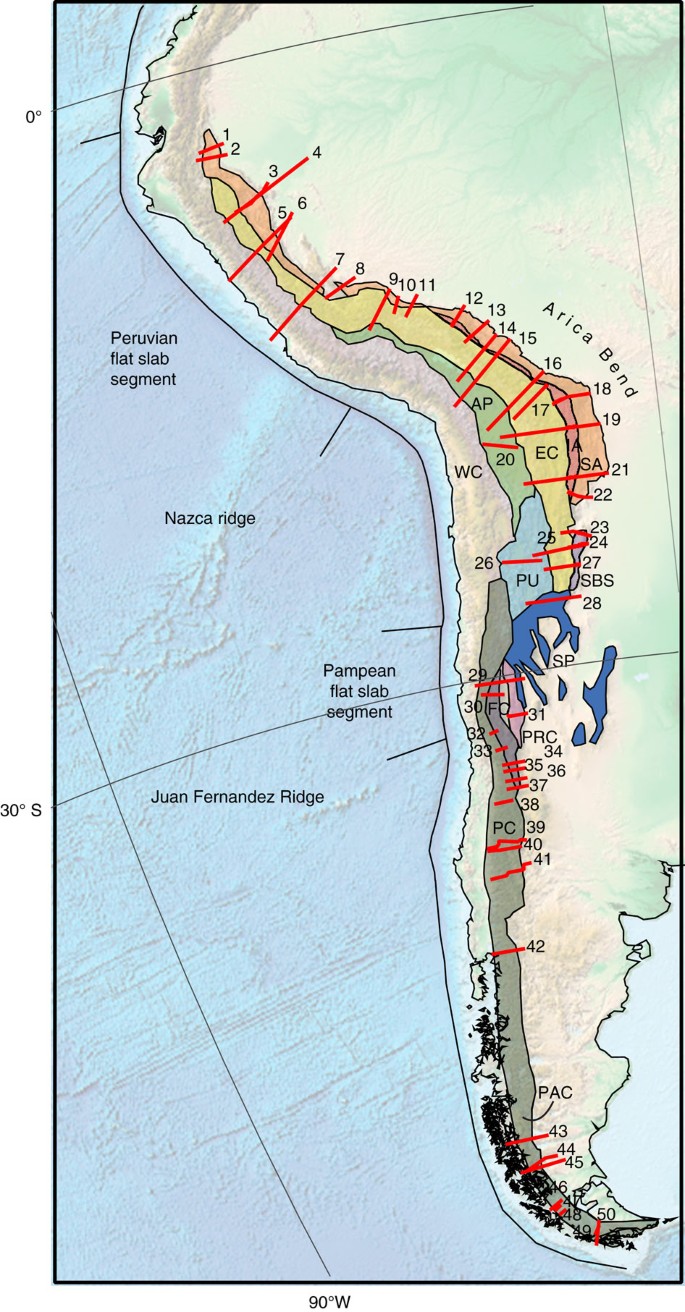



South American Plate Advance And Forced Andean Trench Retreat As Drivers For Transient Flat Subduction Episodes Nature Communications
A divergent c transform b convergent d complex 6As the plates move away from the spreading centers, they cool, and the higher density basalt rocks that make up ocean crust get consumed at the ocean trenches and subduction zones The crust is recycled back into the aesthenosphere 2 Tectonic plates diverge not only on land, but mostly at the ocean bottomTectonic plates are generally 21Base your answer to the following question on the map below The map represents the movement of tectonic plates that resulted in the collision of India with Asia Scientists believe that 71 million years ago, India was at position A A)a rift valley B)a mountain range C)an oceanic ridge D)an oceanic trench



Earthquake Report Explorer Plate Earthjay Science



The Unusual Case Of The Mexican Subduction Zone
Scientists use the magnetic polarity of the sea floor to determine the age Very little of the sea floor is older than 150 million years This is because the oldest sea floor is subducted under other plates and replaces by new surfaces The tectonic plates are constantly in motion and new surfaces are always being createdThe arrows below the BOUNDARY A label will move the plates Click the left arrow once to see how the plates move How would you describe the motion of plates in a transform boundary?Before 1900 Divergent margin Convergent margin Transform fault (arrows show relative motion) PLATE BOUNDARIES Most of the world's earthquakes and volcanoes are
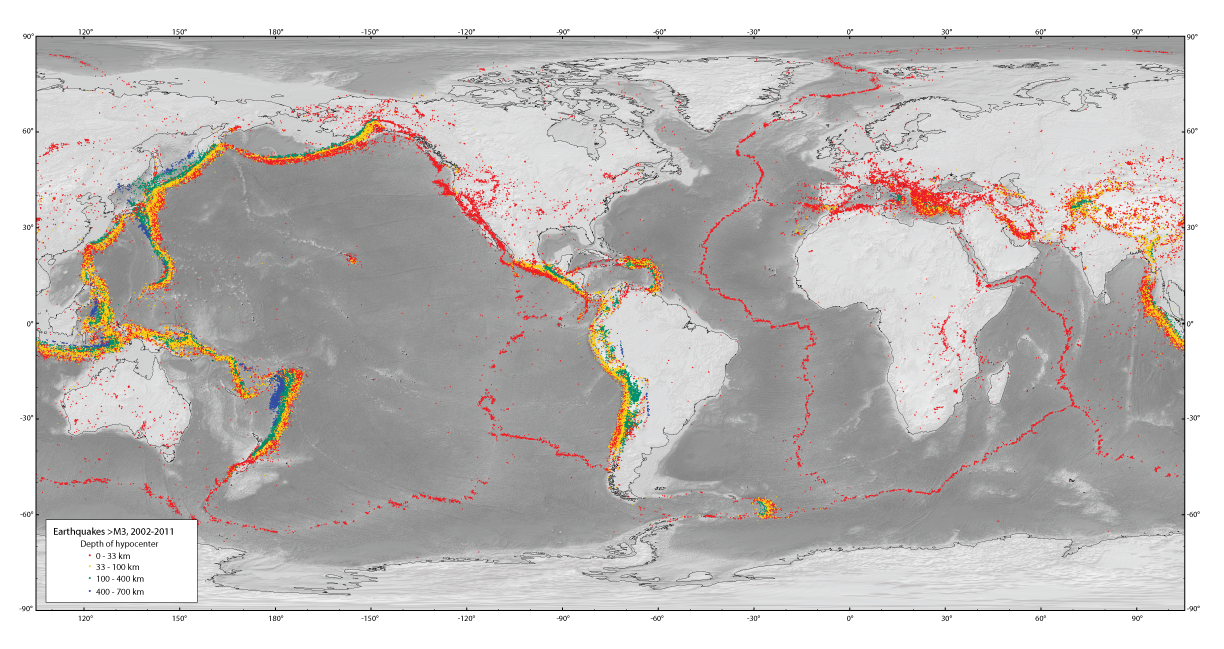



Plates Plate Boundaries And Driving Forces Earth Science Visionlearning




Plate Boundaries Convergent Divergent And Transform Boundaries Clep Class 21 Video Study Com
The pattern of ages of seafloor rocks on one side of the midocean ridge MATCHES the pattern observed on the other side of the ridge The YOUNGEST seafloor rocks are found CLOSE TO the midocean ridge The OLDEST seafloor rocks are found FAR AWAY FROM the midocean ridgePlates move apart at midocean ridges where new seafloor forms Between the two plates is a rift valley Lava flows at the surface cool rapidly to become basalt, but deeper in the crust, magma cools more slowly to form gabbro So the entire ridge system is made up of igneous rock that is either extrusive or intrusiveBase your answers to questions 15 and 16 on the map below Dots on the map show the distribution of major earthquake epicenters The shaded circle labeled A represents a location on Earth's surface 15 Location A is best described as an area that is 1) within a rift valley at a midocean ridge 3) within a deepsea trench between two converging plates
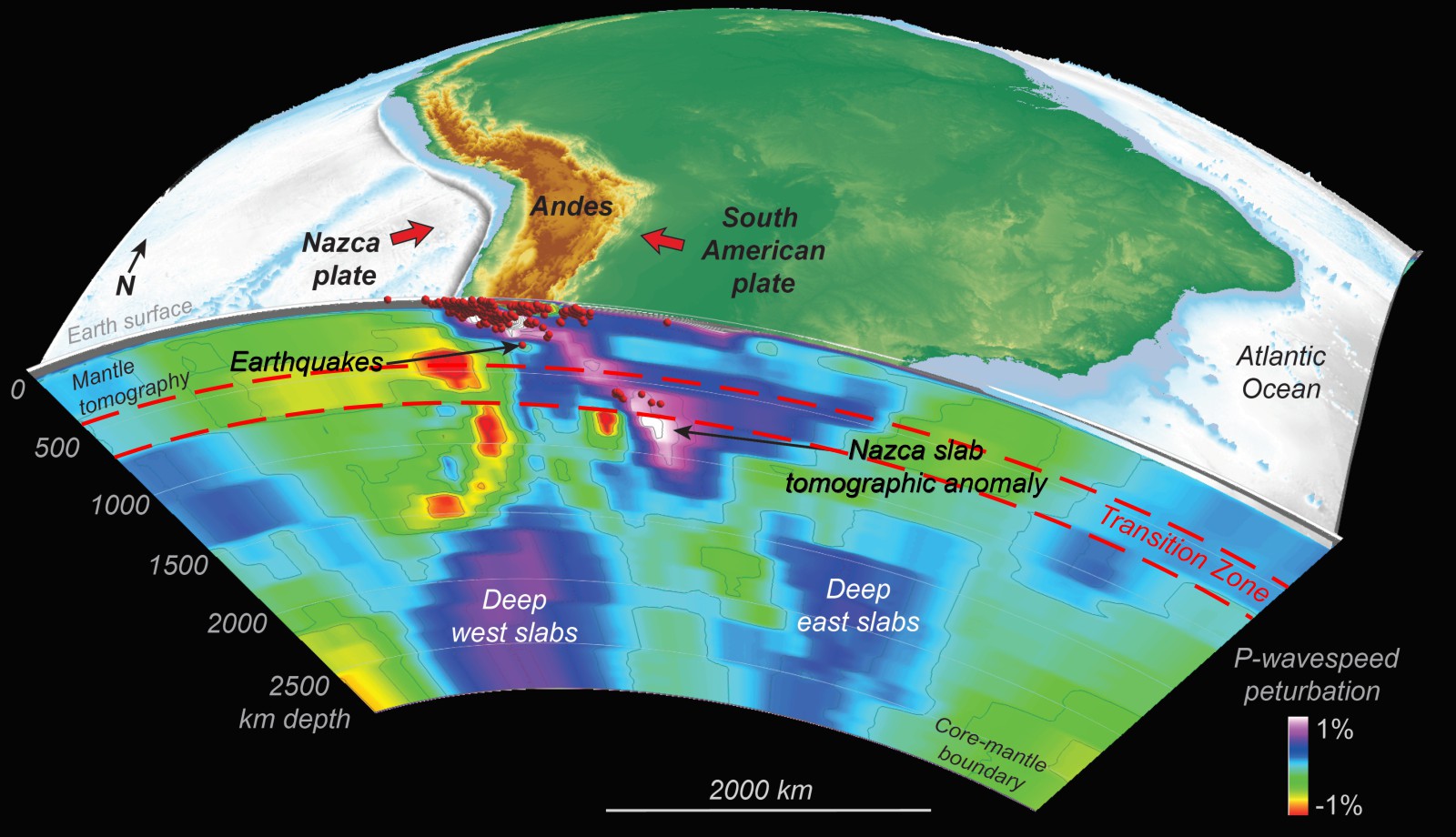



Plate Tectonics Runs Deeper Than We Thought Ars Technica
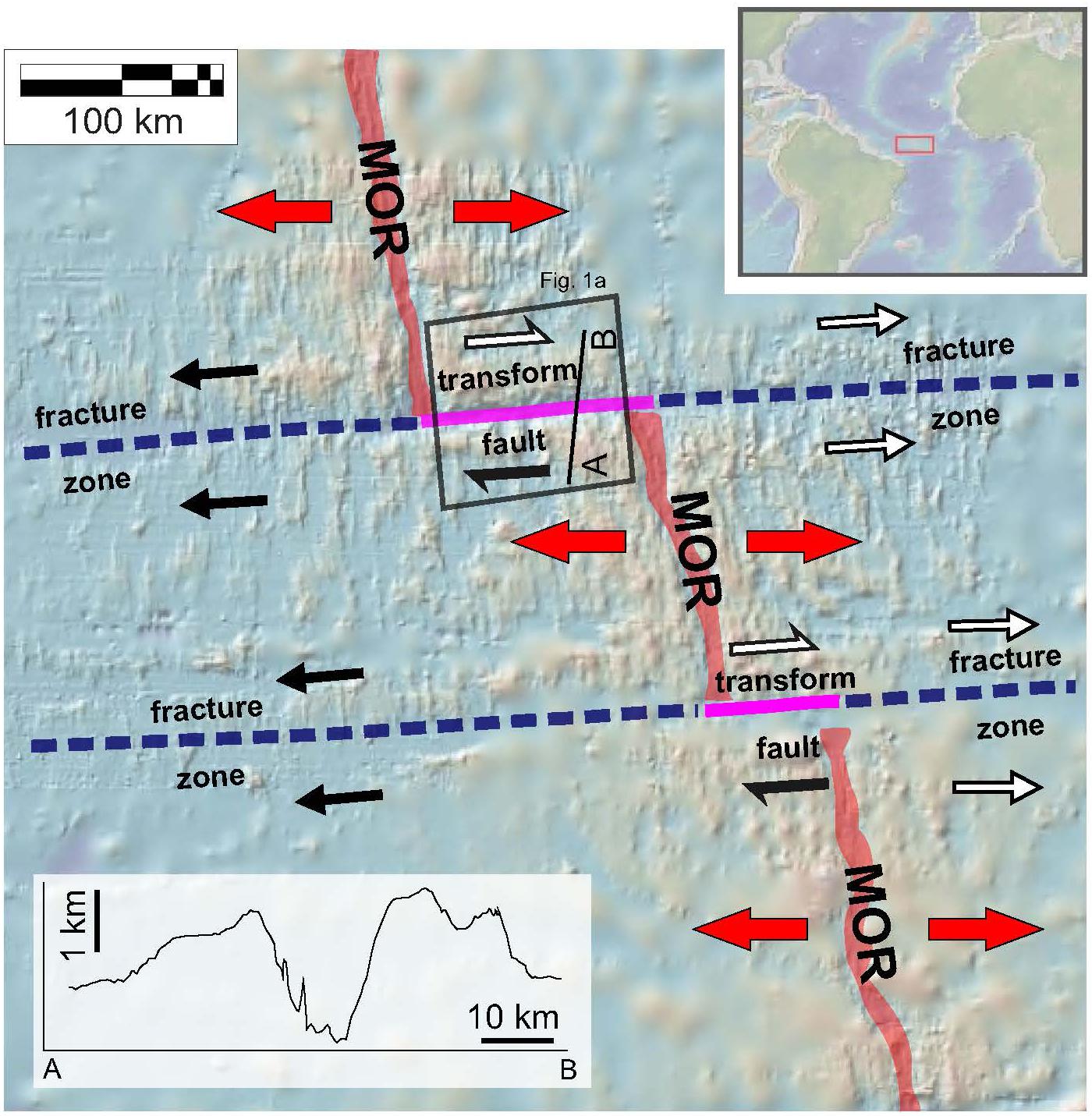



Frontiers Marine Transform Faults And Fracture Zones A Joint Perspective Integrating Seismicity Fluid Flow And Life Earth Science
Many distinct pieces These distinct pieces are known as plates 2 Plates can contain only oceanic crust, only continental crust or both crust types 3 Because they rest on the asthenosphere which is relatively soft and constantly in motion, plates are also always in motion with relation to one another even though this motion is very slow III78 On the map shown, a valley is located south of point B and a mountain range north of point B State the tectonic process that is creating these two land features 1 79 The block diagram below represents Earthâ s surface and interior along the East African Rift Draw two arrows, one through point X and one through point K to indicate theOceanic plates are continuously forged at midocean ridges, an undersea mountain chain created where the edges of two plates are separating If you could sit right under a ridge, you would see rocks from the Earth's mantle—the hot layer underlying the crust—melting and percolating up toward the seam between the two plates



Pses Dynamic Crust Review Ques




What Is The Mid Atlantic Ridge Universe Today
The map below shows the major lithospheric plates on Earth The arrows show the motion of the plates relative to the slowest moving plate, the African plate What is happening to the width of the Atlantic Ocean over time39) According to tectonic plate maps, New York State is presently located A) at a convergent plate boundary B) above a mantle hot spot C) above a midocean ridge D) near the center of a large plate 40) The map below shows the northern section of the boundary between the Arabian Plate and the African Plate Arrows show the relative direction ofThe northern boundary of the Caribbean plate is subparallel to the relative direction of motion of the two plates, so that the plates mostly slide past each other However, the motion is slightly oblique to the plate boundary (see the arrow in Figure 1) and the North American plate is partially converging with the Caribbean plate and being




Plate Tectonics And The Ring Of Fire National Geographic Society



Env Geol Plate Tectonics Lecture Outline
Above A marine gravity map of the North Atlantic Ocean Red dots show locations of earthquakes with magnitude > 55 and they highlight the presentday location ofThe new map gives an accurate picture of seafloor topography at a scale of 5 kilometers per pixel 14 PNG From these seafloor maps, scientists can further refine their understand of the evolution and motion of Earth's tectonic plates and the continents they carryJan 30, 02 · Arrows show the relative motions of the crust at a few spreading centers and transform faults (other locations are similar) (Base map from Google Earth Tectonic features adapted from Alvarez et al, Bathymetry and active geological structures in the Upper Gulf of California, Bol Soc Geol Mex v61 n1, 09)



10 4 Plates Plate Motions And Plate Boundary Processes Physical Geology




Satellite Applications For Geoscience Education
• Draw the geometries of the plates at depth for any spreading center or subduction zone • Show the variations in thickness of the crust and variations in thickness of the lithosphere • Draw arrows to indicate which way the plates are moving relative to each other • Show where melting is occurring at depth to form volcanoes on theThe Earth's lithosphere, which includes the crust and upper mantle, is made up of a series of pieces, or tectonic plates, that move slowly over time A divergent boundary occurs when two tectonic plates move away from each other Along these boundaries, earthquakes are common and magma (molten rock) rises from the Earth's mantle to the surface, solidifying to create new oceanic crustJan 27, 14 · 1 The diagram below shows three plates (A, B, C) Plate B is denser than Plates A and C A continent is shown on Plate C, along with seafloor The other plates are entirely seafloor The arrows show the directions that the plates are moving Complete the table First, note the geologic feature(s) that corresponds to each number on the map




Juan De Fuca Plate An Overview Sciencedirect Topics




Reading Theory Of Plate Tectonics Geology
The arrows on the map below show the general motion of Earth's major platesWhich number is most likely the location of a volcano formed by a divergent boundary?Map below, which shows crustal plate boundaries located along the Pacific coastline of the United States The arrows show the general directions in which some of the plates appear to be moving slowly A)The bedrock is youngest at the ridge B)The bedrock is oldest at the ridge C)The bedrock at the ridge is the same age as the
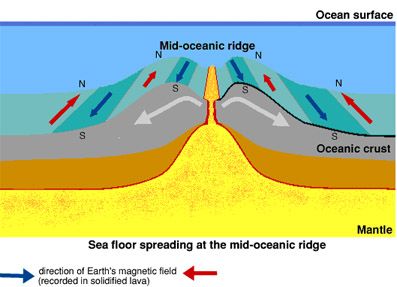



Motion Of Tectonic Plates




Reading Theory Of Plate Tectonics Geology




Ridge Push Wikipedia




Chapter 1 Plate Tectonics The Story Of Earth




Chapter 4 Plate Tectonics Physical Geology
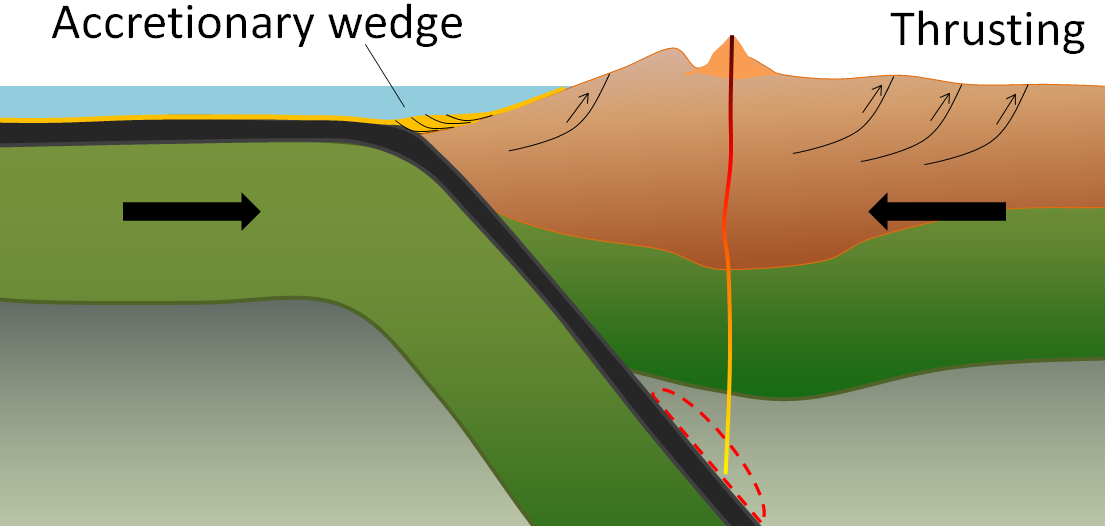



4 6 Convergent Plate Boundaries Introduction To Oceanography




Plate Tectonics Historical Geology




1 The Diagram Below Shows Three Plates A B C Plate B Is Denser Than Plates A And C A Continent Brainly Com




Caribbean Tsunami And Earthquake Hazards Studies
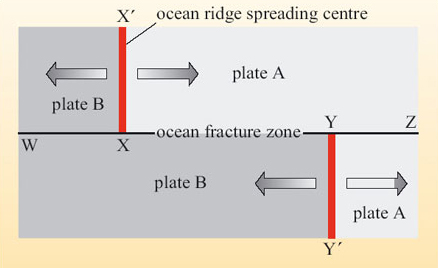



Plate Tectonics 3 8 Conservative Plate Boundaries And Transform Faults Openlearn Open University S279 1
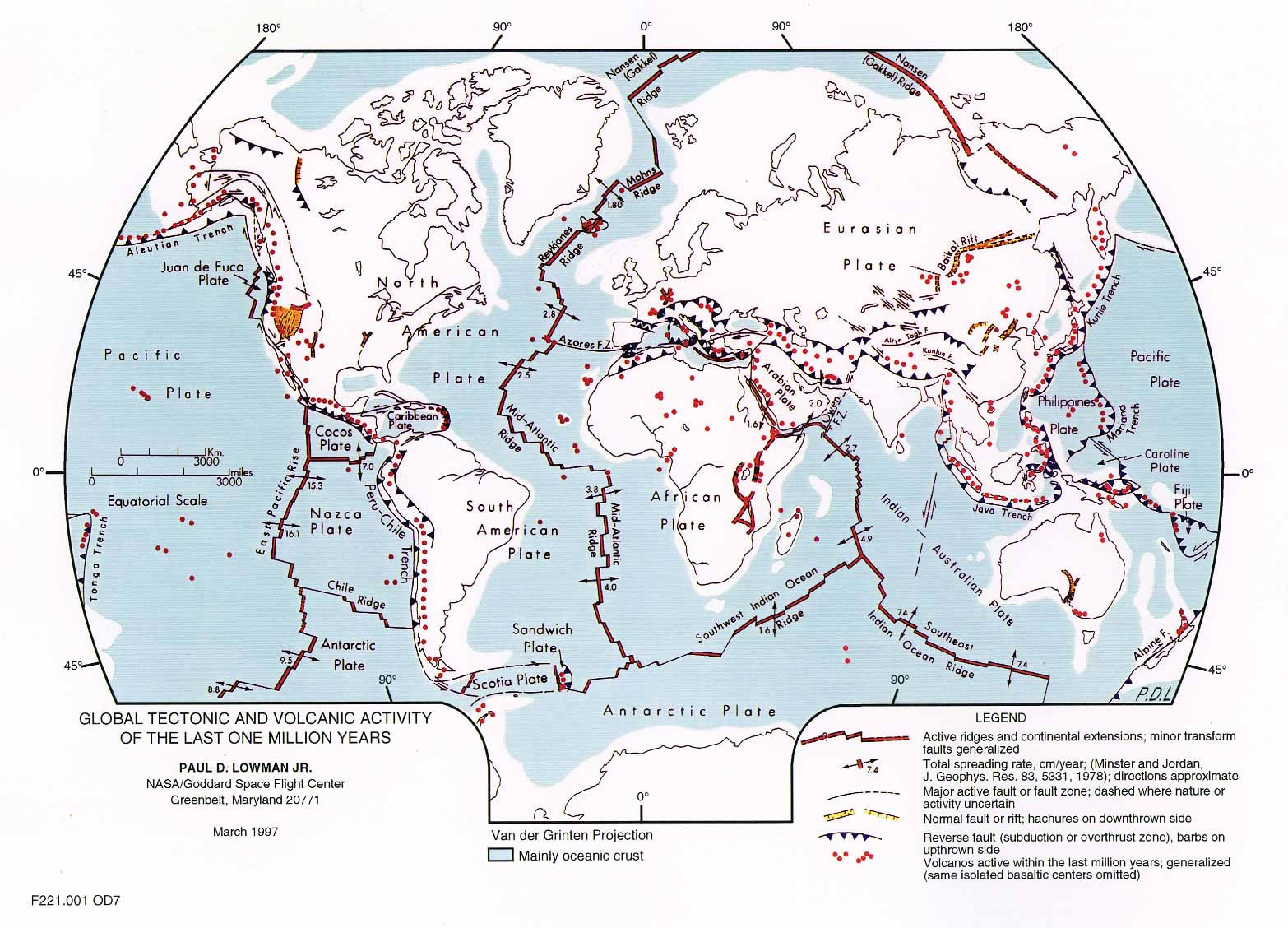



Plate Tectonics Map Plate Boundary Map




Theory Of Plate Tectonics Earth Science




Chapter 1 Plate Tectonics The Story Of Earth



Transform Plate Boundaries Geology U S National Park Service




Currents Waves And Tides Smithsonian Ocean




Mid Atlantic Ridge Definition Map Facts Britannica
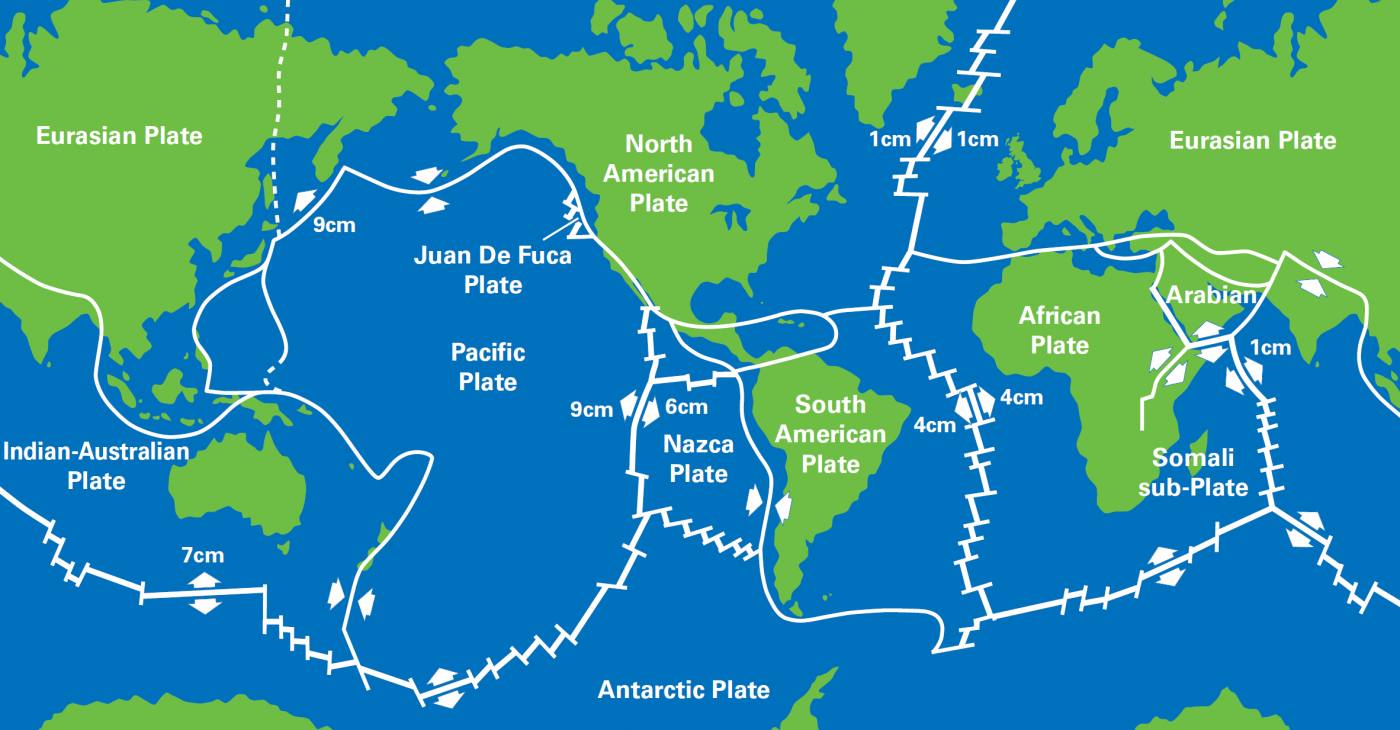



What Causes Earthquakes British Geological Survey




The Geological Society




Satellite Applications For Geoscience Education
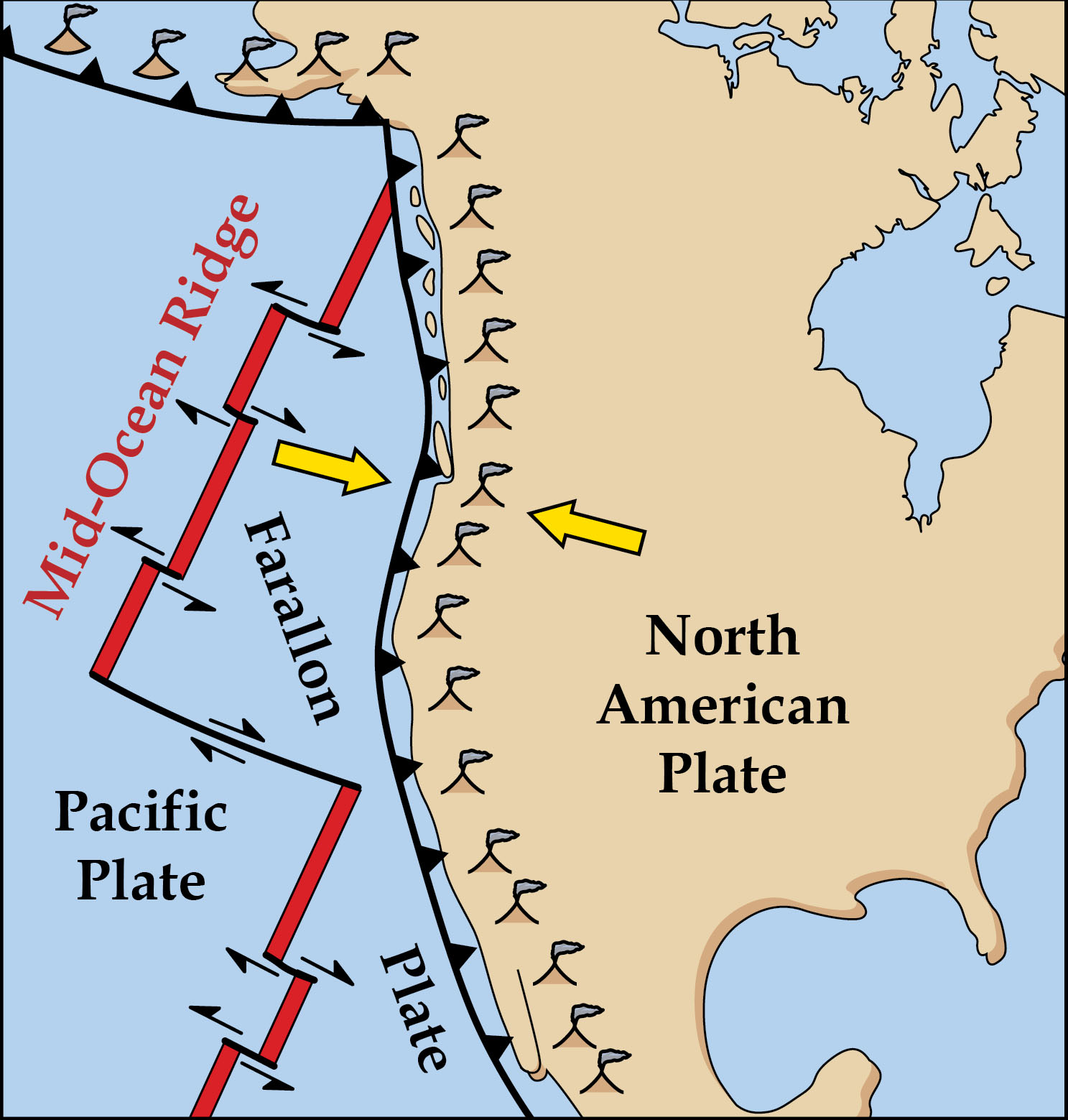



Transform Plate Boundaries Geology U S National Park Service
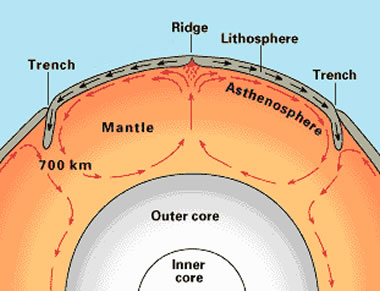



Plate Tectonics Map Plate Boundary Map
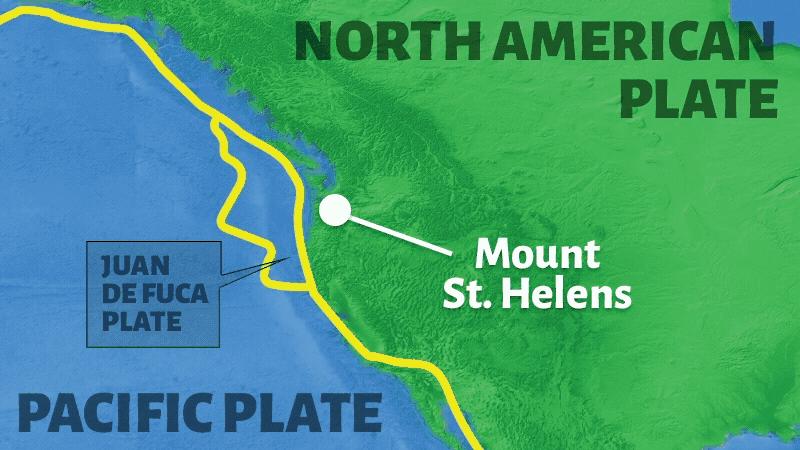



Plates On The Move Game Amnh
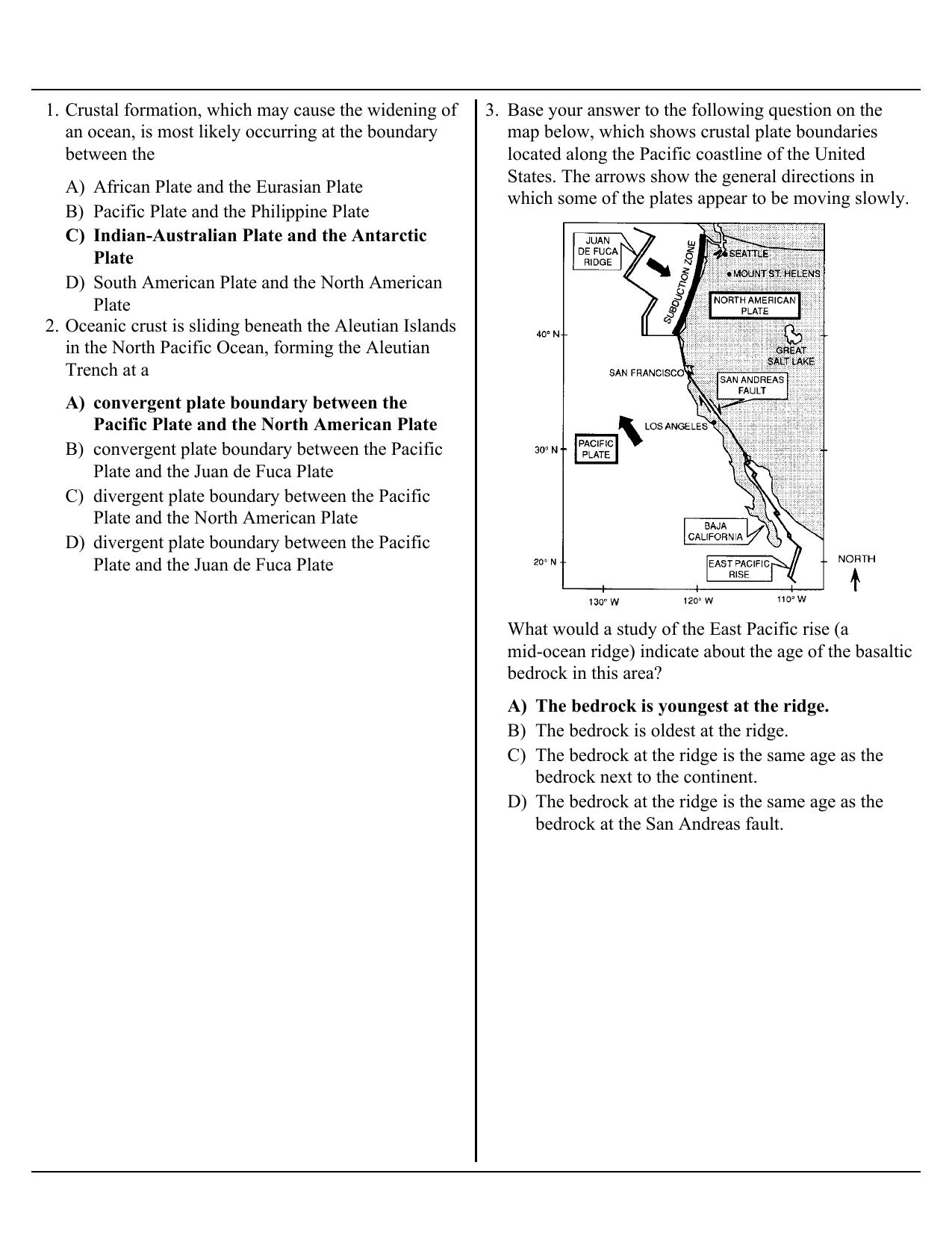



Seafloor Spreading




Chapter 1 Plate Tectonics The Story Of Earth




Former Piece Of Pacific Ocean Floor Imaged Deep Beneath China Mirage News
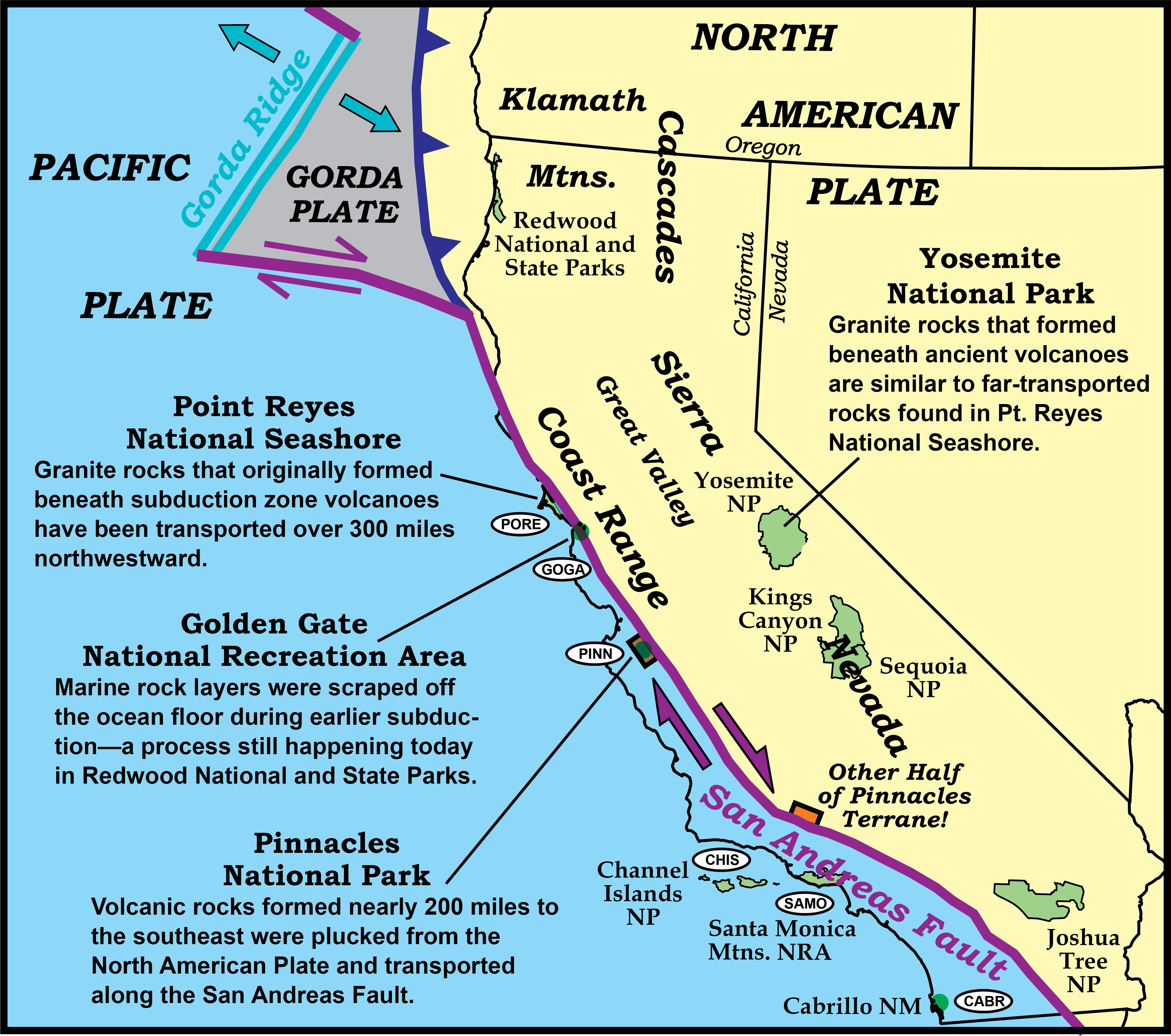



Transform Plate Boundaries Geology U S National Park Service




Model Of Sea Floor Spreading




Earth S Crust Test Prep
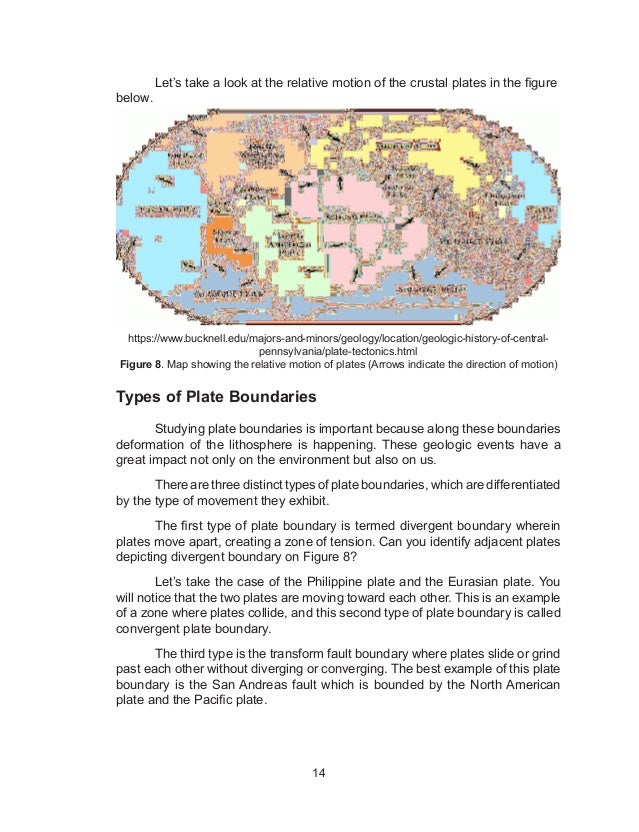



Lmgrade 10 Science Unit1




Location Map With Major Physiographic And Plate Tectonic Features Of Download Scientific Diagram




The Theory Of Plate Tectonics Geology



10 4 Plates Plate Motions And Plate Boundary Processes Physical Geology




Plate Tectonics Geological Features Of Divergent Plate Boundaries Video Khan Academy
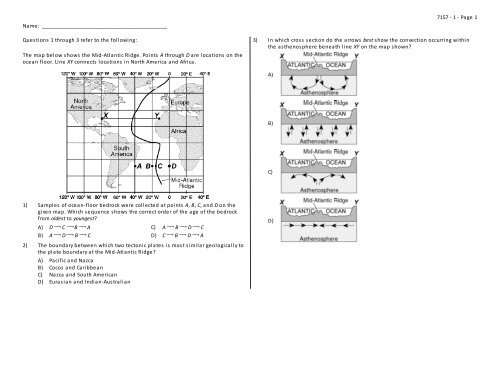



The Map Below Shows The Mid At Charlesburrows Com
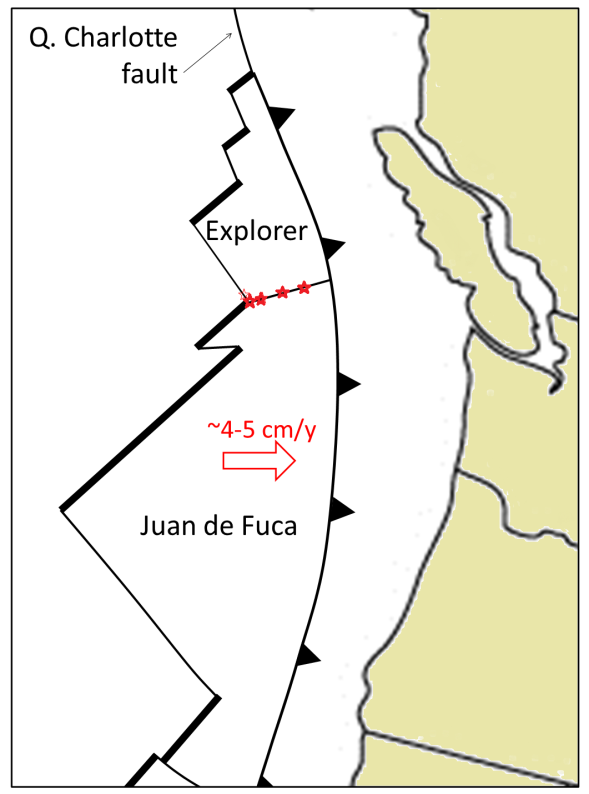



10 4 Plate Plate Motions And Plate Boundary Processes Geosciences Libretexts




Former Piece Of Pacific Ocean Floor Imaged Deep Beneath China Mirage News



Plate Tectonics Earthjay Science
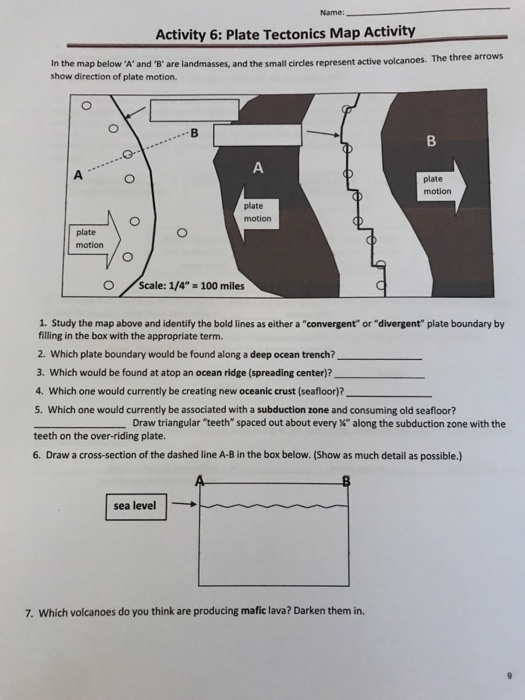



Solved Name Activity 6 Plate Tectonics Map Activity The Chegg Com




Location Of The Galapagos Spreading Center Gsc And The Galapagos Download Scientific Diagram
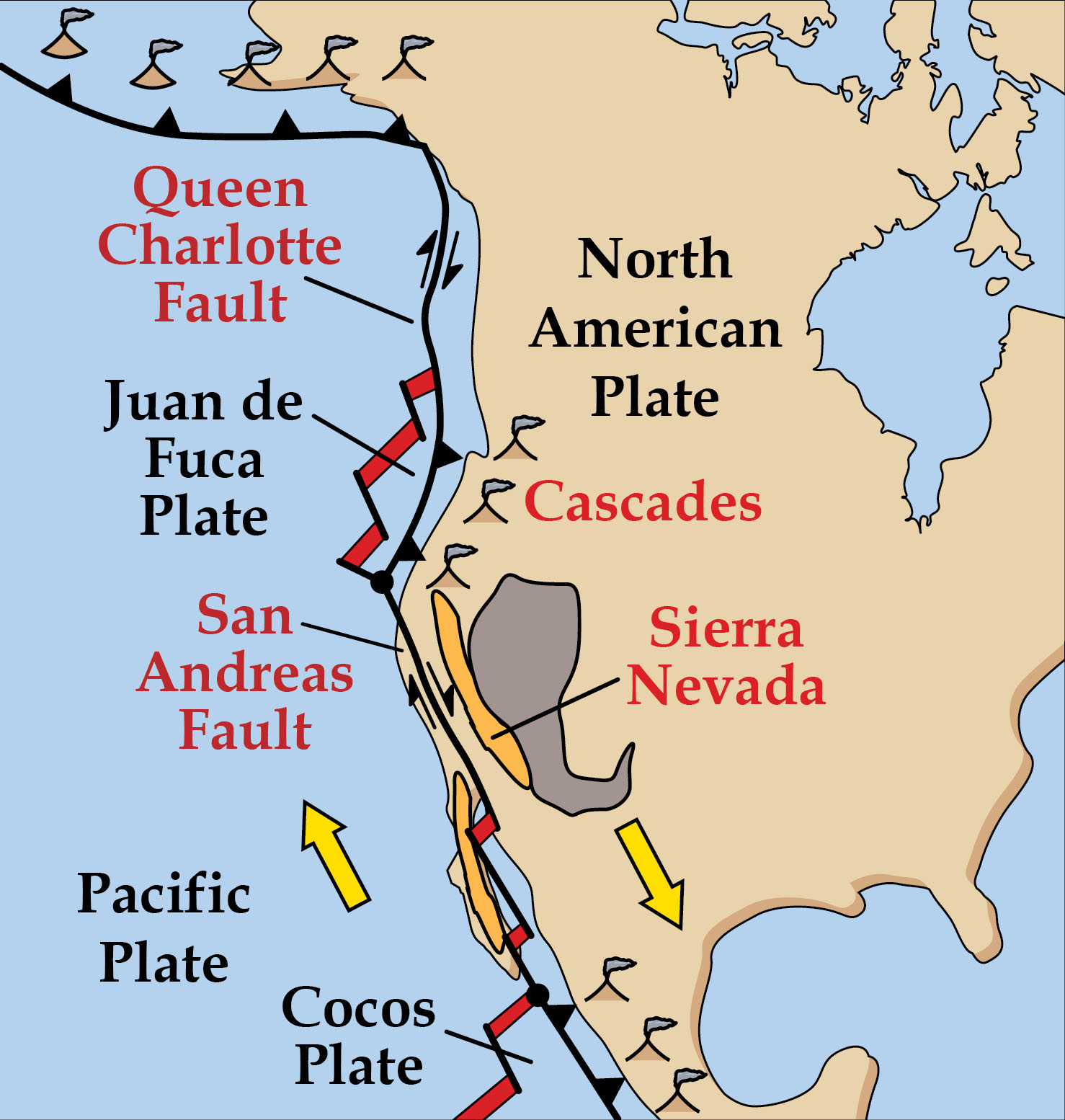



Transform Plate Boundaries Geology U S National Park Service




Plate Tectonics Review Pdf Free Download




Continental Movement By Plate Tectonics Manoa Hawaii Edu Exploringourfluidearth




Principal Tectonic Plates Of Se Asia Arrows Show Plate Motions Download Scientific Diagram




Reading Theory Of Plate Tectonics Geology




Plate Tectonics Wikipedia



Env Geol Plate Tectonics Lecture Outline




Chapter 4 Plate Tectonics Physical Geology




Plate Tectonics View As Single Page
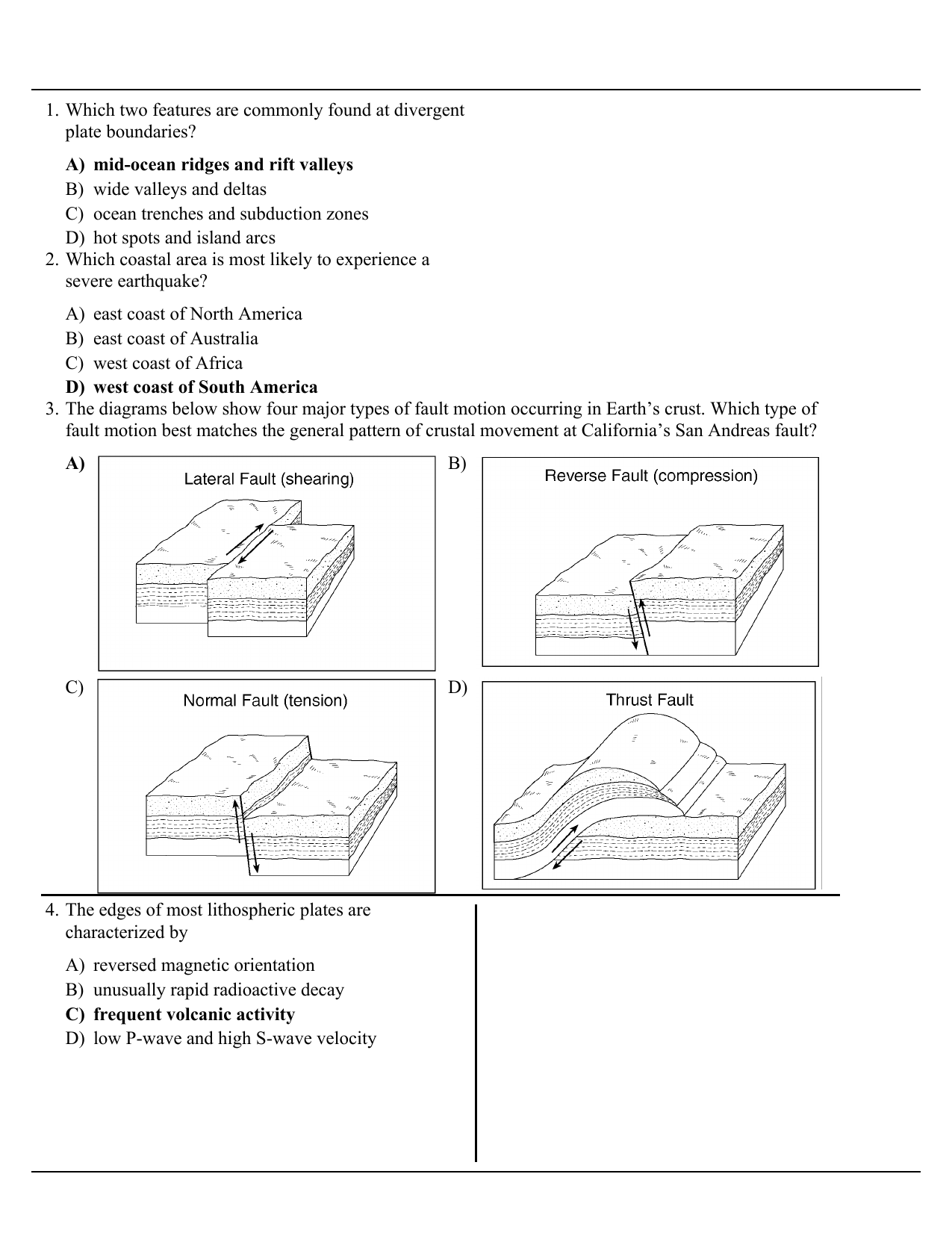



A Mid Ocean Ridges And Rift Valleys B Wide Valleys And Deltas C
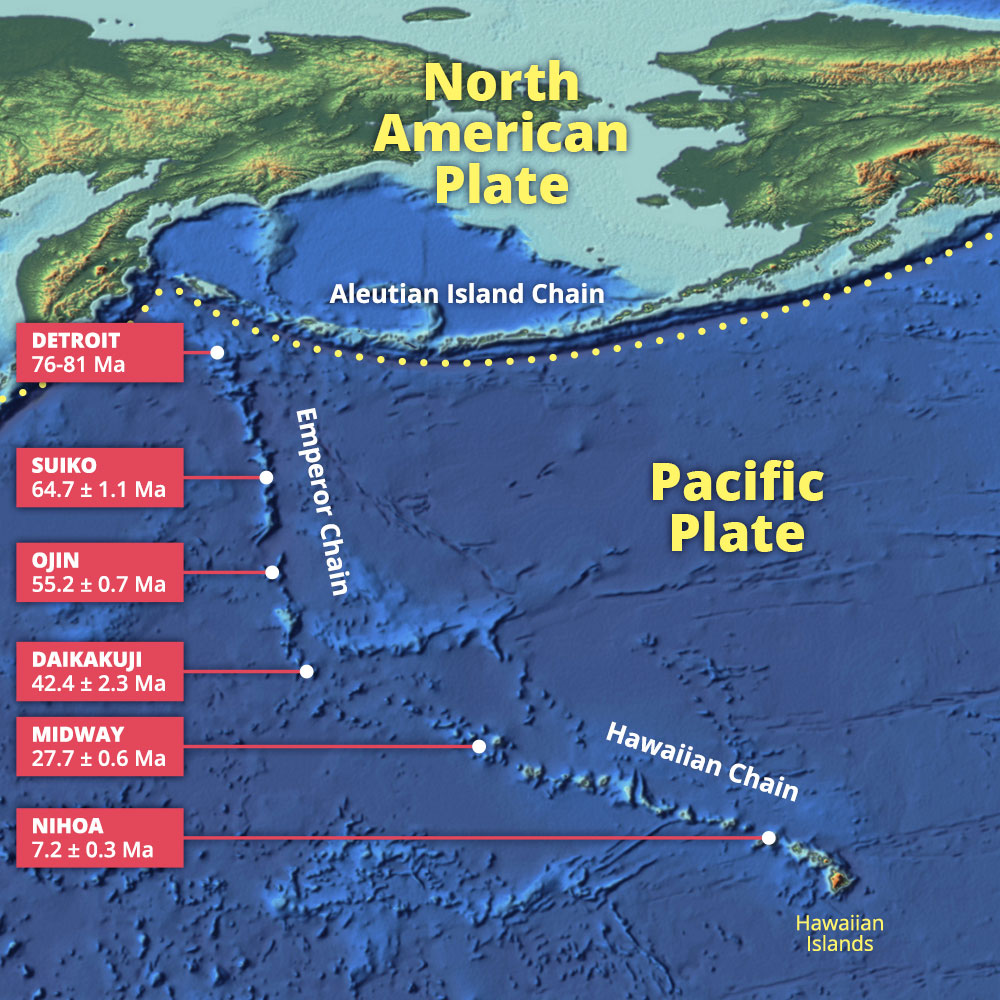



Plates Plate Boundaries And Driving Forces Earth Science Visionlearning
/2008_age_of_oceans_noplates-58b5a1943df78cdcd87e6818.jpg)



The Age Of The Ocean Floor




Chapter 1 Plate Tectonics The Story Of Earth



Modeling Plate Tectonics And Volcanoes Mynasadata




Plate Tectonic Theory Tectonic Plates Map Movement Boundaries Cea




Reading Theory Of Plate Tectonics Geology
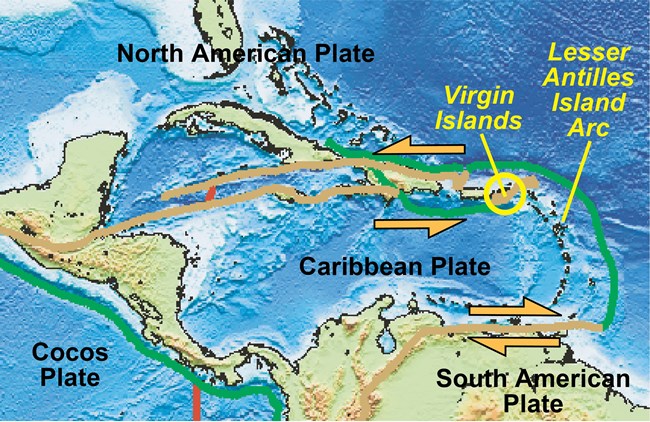



Transform Plate Boundaries Geology U S National Park Service
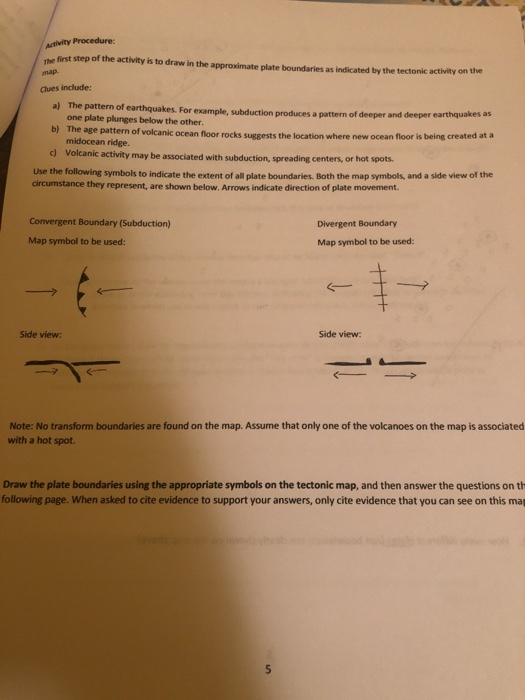



Solved He First Step Of The Activity Is To Draw In The Ap Chegg Com




Plate Tectonics Ppt Download




Model Of Sea Floor Spreading




Oceanic Ridge Geology Britannica



Why Sumatra




Tectonic Plate An Overview Sciencedirect Topics
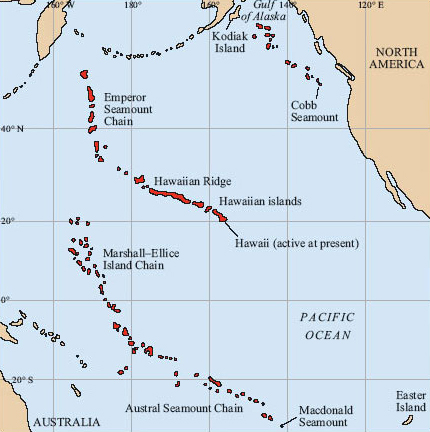



Plate Tectonics 4 2 Hot Spot Trails And True Plate Motions Openlearn Open University S279 1




Model Of Sea Floor Spreading


コメント
コメントを投稿